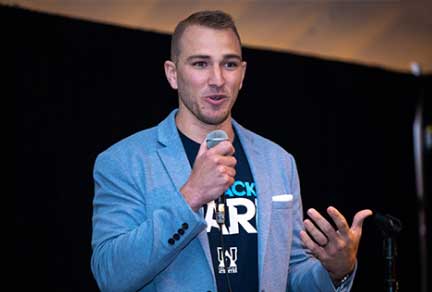Integrated evidence planning and RWE: Realizing value throughout the development lifecycle
In drug development, the success of a product hinges on the strength of the ongoing evidence package to demonstrate its value throughout lifecycle management. Evidentiary demands vary widely by stakeholder, and evidence generation can be costly — both in terms of time and money. Manufacturers should approach evidence generation needs strategically, by first creating an integrated evidence plan (IEP) to evaluate evidentiary needs and identify opportunities for value creation holistically.
An IEP, by definition, considers every stakeholder in the drug development process and prioritizes, through consensus, the activities that will help produce the most compelling evidence. By adopting this unified and collaborative approach, biopharma companies can identify and satisfy evidentiary needs of each stakeholder group while also eliminating gaps and reducing redundancies.
Real world data (RWD) and real world evidence (RWE) can play a critical role in strategic evidence generation. As the quality and availability of RWD increases, there is growing acceptance by regulatory bodies1 of its use in submissions. While the Randomized Controlled Trial (RCT) is considered the gold standard for study design, there are situations in which using a control cohort of patients would be impractical or unethical. Examples include rare disease therapies or products on accelerated approval pathways. And even RCTs have data gaps — shortfalls that, with careful planning, can be addressed through augmentation with RWD/E approaches so that manufacturers can more fully demonstrate a product’s safety, effectiveness, payer value, and patient benefits.
On The RWD & RWE Podcast, Real World Wednesdays, I discussed opportunities to use RWD/E to its best advantage. This included:
- Plan for evidence needs as early as possible in the development lifecycle. This means Real world research experts should be part of the creation, evaluation, and ongoing revision of any IEP. They can offer ideas for the use of RWD/E throughout the lifecycle of the product — from providing a better understanding of disease burden or standards of care during preclinical research to using post-marketing data to explore differentiation in subpopulations or the value of license extensions.
- Consider ways in which RWD/E could add value to early-stage research. While RWD/E can be extremely important during phase 3 research, sponsors can also realize benefits much earlier in the process. For example, we recently partnered with a sponsor working to treat chronic hepatitis B. Phase 2 research for this product required real world cohorts created from electronic health records — a process known as EHR-to-EDC mapping. Manual creation of these cohorts required heavy manual data extraction and curation, but Parexel’s Real World Research team designed an AI solution for EHR-to-EDC mapping that required significantly less manual effort but with equivalent precision to a manual curation method.2
- Enlist a partner with expertise in real world research. Thanks to our close focus on RWE solutions, Parexel’s Real World Research team can offer clients cutting-edge solutions that they may not have considered or had time or resources to build. In the case of the EHR-to-EDC mapping solution, for instance, we were able to adapt that same tool for a later study conducted by a different client, saving significant manual data extraction costs.3
Dynamic evidence platforms
When creating an IEP, sponsors should also consider how they might optimize their approach to deployment of technology solutions and data management strategies, as any plan will call for the collection and analysis of large amounts of data, including RWD. To accommodate expanding data sources and evolving stakeholder needs, Parexel develops dynamic evidence platforms built within scalable modules. These modules can help contextualize data from ongoing clinical trials using disparate data sources and can be linked directly to the IEP objectives, so that stakeholders can receive relevant insights in a timely way.
Such “dynamic evidence platforms” can be developed for broad use cases, including obtaining dynamic signals and insights from competitor products, generating real-time health economic signals and monitoring evolving treatment landscapes and treatment patterns. By utilizing dynamic evidence technology platforms and overlaying advanced predictive analytics, sponsors can generate enhanced insights — a path to faster, smarter decisions.
A practical use case example of the deployment of a technology solution is a safety registry study that Parexel partnered on recently. In this project, the sponsor is required to provide annual interim reports for eight years. The study incorporates data from multiple sources, including risk evaluation and mitigation strategies, pharmacovigilance processes, clinical trials, and early access programs. It required a robust tech deployment, data transformation and data management strategy to ensure that the quality of data met regulatory requirements.
To harmonize and aggregate data from diverse sources to support annual report requirements, Parexel deployed our proprietary dynamic evidence platform called DASH. We ingested and aggregated 100 datasets, allowing us to establish repeatable data-processing procedures that will shorten timelines and reduce effort for the duration of the study. We also created a technology-enabled query management solution to address data discrepancies and conflicts at their source. The benefit to the customer was evidence “at scale” to satisfy regulatory commitments in a cost effective and dynamic way.
In an increasingly complex and competitive environment, RWD/E plays a growing role in lifecycle management and the probability of a product's success. To unlock its full potential, sponsors must plan for it as early as possible in the product lifecycle — ideally as part of an integrated evidence plan. If your team could use support in this area, Parexel’s experts can help you align functions, anticipate needs, and address challenges at every step of the development process. We’re always available for a conversation.
References:
- Alipour-Haris, G., Liu, X., Acha, V., Winterstein, A. G., & Burcu, M. (2024). Real-world evidence to support regulatory submissions: A landscape review and assessment of use cases. Clinical and Translational Science. https://doi.org/10.1111/cts.13903
- Zhou, X., Zeng, T., Zhang, Y., Liao, Y., Smith, J., Zhang, L., Wang, C., Li, Q., Wu, D., Chong, Y., & Li, X. (2004). Automated data collection tool for real-world cohort studies of chronic hepatitis B: Leveraging OCR and NLP technologies for improved efficiency. New Microbes and New Infections. https://doi.org/10.1016/j.nmni.2024.101469
- Internal data
Related Insights
Blog
Incorporating the patient voice in clinical research: Validation of COAs for a rare disease NDA
Nov 17, 2025
Blog
Studying rare cancer patient populations using integrated genomic and real-world data
Aug 30, 2023
Article
New FDA Guidance Addresses the Need for Data-Generation Strategies Across the Drug Development Lifecycle
May 10, 2022
Blog
Maintaining Data Integrity for Quality and Compliance – Essential Despite Pandemic Disruptions
May 16, 2022
Playbook
Are you using real-world evidence?
Feb 1, 2023
Video
The science and practice of ethnobridging
May 17, 2023
Webinar
Adaptive strategies for more efficient, data-rich and patient-friendly trials
May 28, 2023
Webinar
Assessing appropriate use of ECAs in clinical trials
May 28, 2023
Blog
A hybrid model supports globally diverse site participation for a retrospective cancer study
Jul 24, 2023
Blog
Removing barriers through pragmatic clinical trials
Oct 12, 2023
Blog
Evidence planning for biotechs: Closing gaps to maximize value
Nov 4, 2025
Blog
Deriving meaningful insights from real-world data for diverse Alzheimer’s research studies
Mar 19, 2024
Related Insights
Blog
Incorporating the patient voice in clinical research: Validation of COAs for a rare disease NDA
Nov 17, 2025
Blog
Studying rare cancer patient populations using integrated genomic and real-world data
Aug 30, 2023
Article
New FDA Guidance Addresses the Need for Data-Generation Strategies Across the Drug Development Lifecycle
May 10, 2022
Blog
Maintaining Data Integrity for Quality and Compliance – Essential Despite Pandemic Disruptions
May 16, 2022
Playbook
Are you using real-world evidence?
Feb 1, 2023
Video
The science and practice of ethnobridging
May 17, 2023
Webinar
Adaptive strategies for more efficient, data-rich and patient-friendly trials
May 28, 2023
Webinar
Assessing appropriate use of ECAs in clinical trials
May 28, 2023
Blog
A hybrid model supports globally diverse site participation for a retrospective cancer study
Jul 24, 2023
Blog
Removing barriers through pragmatic clinical trials
Oct 12, 2023
Blog
Evidence planning for biotechs: Closing gaps to maximize value
Nov 4, 2025
Blog
Deriving meaningful insights from real-world data for diverse Alzheimer’s research studies
Mar 19, 2024



